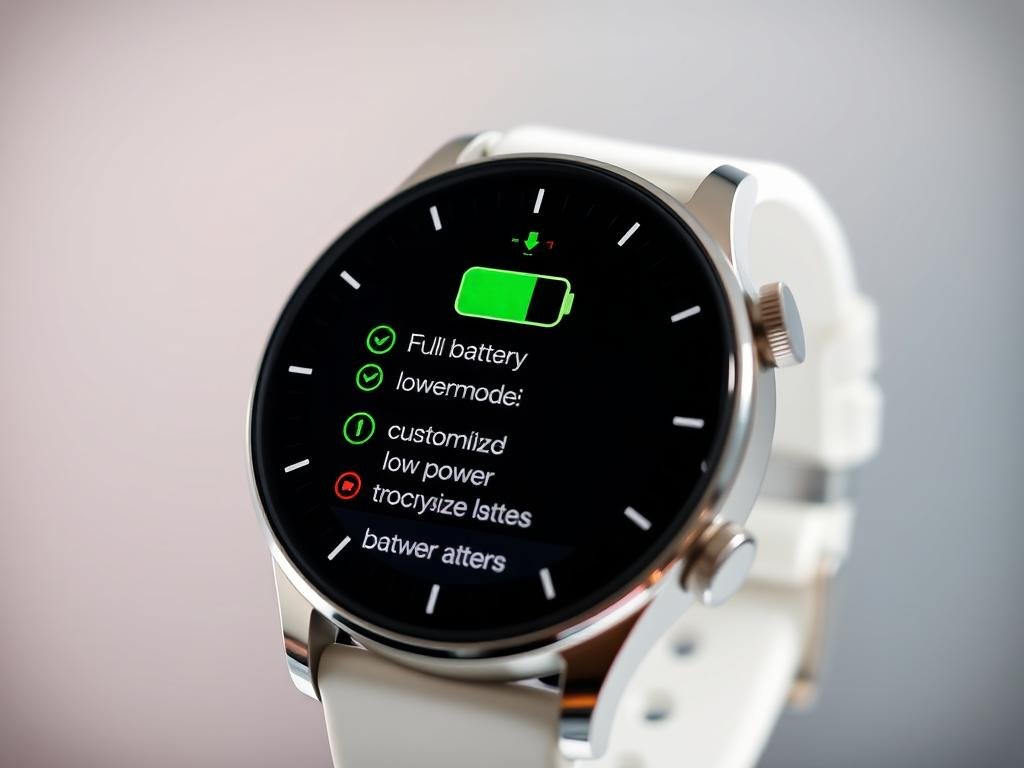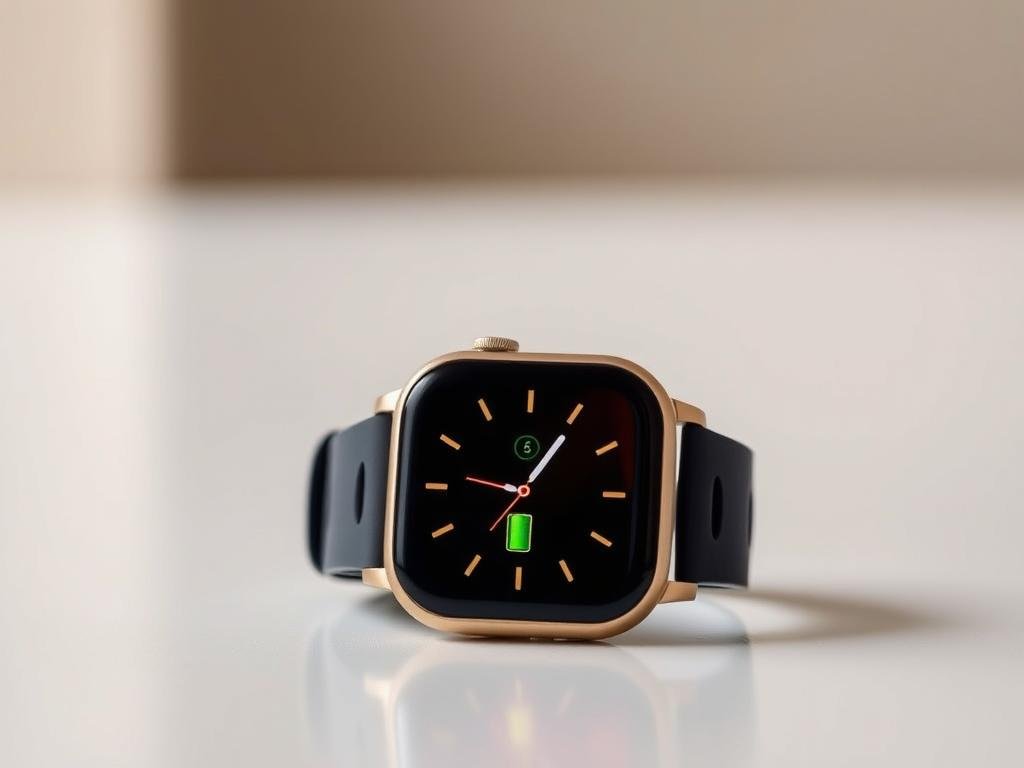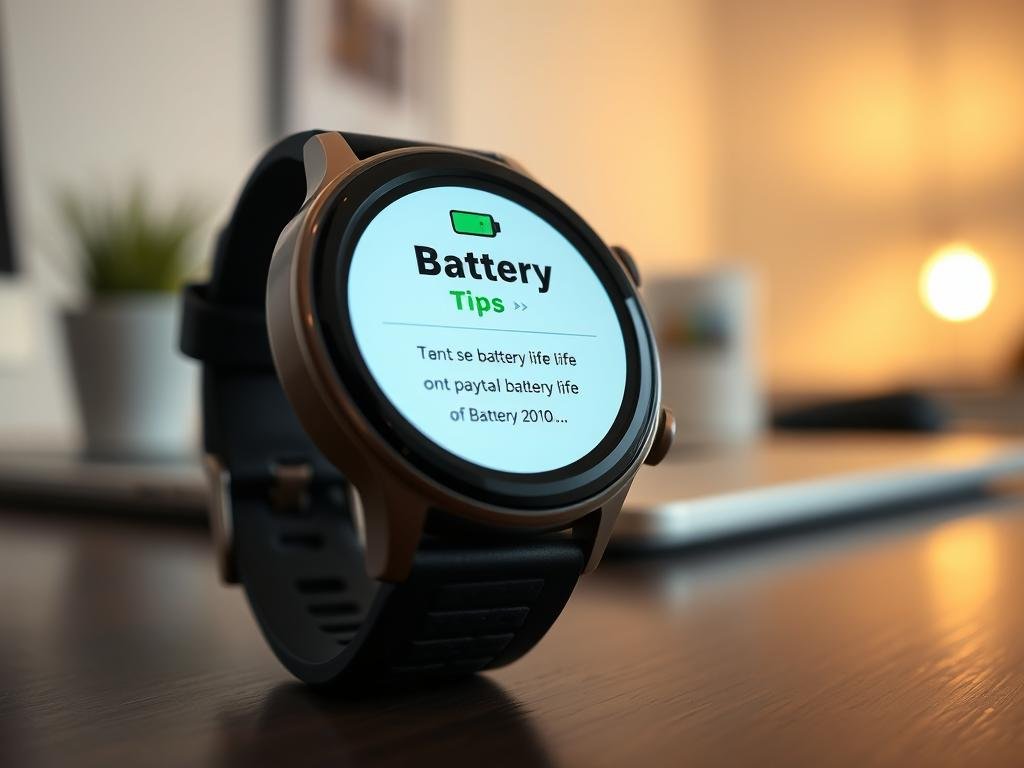Surprising fact: creators who use wrist alerts report that a dead watch costs them up to a full shooting day in missed cues and reshoots.
You need a simple, reliable plan to keep your device working through long shoots. A one-second palm cover to trigger sleep mode and platform power modes can cut wasted drain fast. Use the quick gesture, trim always-on displays, and prune background data so essential prompts stay live without extra waste.
This guide gives clear, creator-focused actions—from Apple Watch Low Power Mode to Wear OS and Galaxy Watch power settings—so you can toggle modes instantly. Learn what display, timeout, and notification settings return the biggest gains. For a deeper, platform-specific walkthrough, see the detailed platform guide at smartwatch setup and power advice.
Result: fewer mid-shoot interruptions, smarter feature choices for health and alerts, and a practical checklist to keep your watch battery reliable across long days.
Power-first setup for creators: dial in your watch, settings, and screen to last through your shoot
Start each shoot by dialing your device into a power-first setup to keep the display quiet and efficient. Small changes to display brightness, wake gestures, and timeouts add up fast and protect charge so you stay on cue.
Enter sleep mode instantly by covering the screen with your palm; that single gesture turns the screen off in seconds and saves more energy than waiting for auto-sleep. On Apple Watch, go to Settings > Display & Brightness to lower brightness, switch Always On off, disable Wake on Wrist Raise, and shorten Wake Duration.
- Set a shoot profile: reduce display brightness, shorten screen timeout, and turn off always-on display to dramatically cut power draw.
- Use the palm cover: a fast cover-to-sleep gesture prevents accidental wake-ups between takes.
- Pick a minimalist face: dark background, only essential complications, no animated seconds or heart graphics.
- Disable wake gestures: turn off raise-to-wake or tilt-to-wake so arm movement doesn’t light the screen.
On Wear OS, open Settings > Display to lower brightness, turn off Always-on screen, shorten Screen timeout, and disable Tilt-to-wake under Gestures. Galaxy Watch users can adjust brightness from the quick panel and toggle Always On Display off in Settings > Display. Lock these changes into a named shoot mode when possible so you can switch profiles quickly before call time.
For an evidence-backed quick read on gesture-driven sleep tricks, see the cover-the-screen sleep trick for device power savings.
Smartwatch battery life tips you can apply today across Apple Watch, Wear OS, and Galaxy Watch
Prepare your watch for a shoot by choosing modes that preserve charge while keeping key cues live. Use Low Power, Battery Saver, or Power saving to drop always-on display, limit background data, and reduce sensors without losing core alerts.

Use power-saving modes without losing your creative edge
On Apple Watch, swipe up and tap the percentage or go to Settings > Battery to enable Low Power Mode. On Wear OS, open Settings > Battery and enable Battery Saver. Galaxy Watch users can tap Power saving from the quick panel or Settings > Battery.
Match modes to location and display settings
Pick Airplane, Theater, Do Not Disturb, or Bedtime for venue needs. Then reduce display brightness, turn off the always-on display, and shorten screen timeout to cut major drains.
Trim notifications, connectivity, and background apps
Allow only mission-critical notifications. Toggle Wi‑Fi or mobile data when not required and disable location for nonessential apps. Limit background app refresh and check battery usage to uninstall apps that spike drain.
Silence voice wake, tone down haptics, and choose a minimal face
Turn off “Hey Siri,” “Hey Google,” or Bixby voice wake. Reduce sounds and vibrations to subtle haptics and use a dark, minimalist watch face to lower refreshes and sensor polls.
Creator-approved battery strategies for long shoots, travel days, and live events
A field-tested setup can hold charge through marathon shoots, travel blocks, and live events. Use one base profile for production days and a slightly tweaked activity profile for motion. These choices keep key alerts active while trimming everything else that drains power.

Field-tested long-life profile
Set pulse ox to on-demand, turn gestures off, and switch alerts to vibration-only. Drop backlight brightness to the lowest readable level and set a short screen timeout of about 4 seconds.
GPS and activity strategy
Use regular gps for road runs and an adaptive option like SatIQ on trails to balance accuracy with energy use. During sessions, keep the map page closed, set data recording to Smart, and avoid music or maps unless essential.
Sleep, connectivity, and charging insurance
Expand sleep hours (for example 8pm–7am) to mute nonessential notifications while leaving heart rate monitoring on for safety. Toggle Wi‑Fi off during activities, keep Bluetooth on for phone links, and disable background app sync you don’t need.
Pack a spare charger or a compact power bank so you can top up between takes. With these settings, you extend battery and protect your workflow across long hours and busy days.
Conclusion
, With a few focused settings and quick gestures, you can protect charge and stay on cue all day.
Prioritize display and mode selection first, then trim notifications, connectivity, and background app usage so your watch supports workflows instead of draining mid-shoot.
Lock a repeatable “shoot day” profile and pair it with an activity and downtime setup to extend battery and preserve focus during travel and late edits.
Make these checks part of your pre-call routine and carry a compact charger so a low watch battery never steals your time or momentum. For repair and maintenance advice, see repair your smartwatch.
FAQ
How can you set up your watch to get through a long shoot?
Start with a power-first profile: enable a low-power mode, reduce screen brightness, shorten screen timeout, and pick a minimalist watch face with a dark background. Turn off always-on display and limit complications so the display only wakes when you need it. These changes keep core features running while stretching charge for hours on set.
What quick action helps you sleep the screen instantly during filming?
Use the sleep or theater mode, or cover the display with your palm if your watch supports that gesture. That prevents accidental wakes and saves energy between takes without changing your overall settings.
Which modes should you use for location shoots like indoor studios or outdoor sets?
Choose based on environment: Theater or Do Not Disturb for quiet indoor shoots, Airplane mode to cut radios during flights or signal-sensitive locations, and Bedtime mode to silence alerts overnight. Each mode reduces background activity and conserves charge while matching the setting.
How do you handle connectivity to save power without losing essential links to your phone?
Keep Bluetooth on for phone pairing and disable Wi‑Fi and mobile data when not needed. Turn off location services for apps that don’t require GPS, or set location to “only while using.” This balances connectivity and power so you stay connected to notifications and calls when it matters.
Should you turn off heart-rate monitoring and other health features during long sessions?
Switch to on-demand measurements when continuous monitoring isn’t necessary. Turn off pulse oximeter or continuous heart-rate tracking and use manual checks for specific needs. That preserves charge while still letting you capture health data when required.
How can you reduce wake events and conserve energy from notifications?
Limit notifications to mission-critical apps only—messaging, call alerts, and your production tools. Disable notification previews and banners, and favor subtle haptics over sound. Fewer wakes equals less display time and better endurance.
What display changes give the biggest gains in run time?
Lower screen brightness, shorten display timeout to a few seconds, and disable always-on display. Choose dark or black watch faces and remove animated complications. These reduce display draw, which usually accounts for the largest share of power use.
How should you manage GPS and location for long outdoor shoots or travel days?
Use regular GPS for mapped road routes and adaptive modes like SatIQ or low-power tracking for hikes. Turn mapping off during simple runs and rely on periodic location pings. That saves energy while keeping accuracy when you actually need it.
What app and background settings will help extend runtime on long days?
Disable background app refresh for nonessential apps, review app permissions to stop unnecessary sensors, and uninstall apps you rarely use. Check the watch’s battery usage screen to identify the biggest drains and act on them.
Should you keep voice assistants and always-listening features enabled during shoots?
Turn off wake words and voice assistant listening if you don’t need hands-free commands. Those features continuously use sensors and can wake the device—disabling them reduces idle power draw and avoids accidental activations on set.
Is reducing sounds and vibrations effective, and how should you configure haptics?
Yes. Lower or mute sounds and reduce vibration intensity. Use short, subtle haptic alerts for essential notifications only. This saves power and prevents disruptions during takes while still keeping you informed.
What’s a field-tested profile for long shoots and live events?
A practical setup uses on-demand health checks, gestures off, low backlight, short timeouts, and mission-only notifications. Keep Bluetooth active, disable Wi‑Fi unless needed, and use vibration-only alerts during sessions to maximize endurance.
How do you prepare for travel days or multi-day shoots to avoid running out of charge?
Pack a dedicated charger or portable power bank compatible with your watch. Use low-power modes during travel, disable unnecessary radios, and charge during breaks. A charger on hand gives you flexibility without compromising your profile.
How often should you check the watch’s power report and act on it?
Check battery usage weekly or before major shoot days. Look for apps and sensors that consume disproportionate power and adjust or uninstall them. Regular checks let you refine settings and avoid surprises during critical moments.
